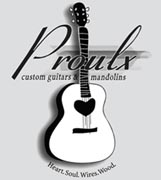|
Click
On Any Image To View Full Size
| |
|
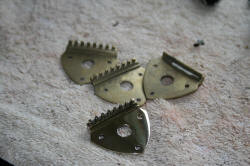
Brian Dean (http://labraid.ca/) cast
these custom tailpieces for me; he was in the middle of moving from
Ontario, all the way to Nova Scotia, so he sent 'em to me in the rough.
I used to do some metal polishing, even a bit of jewelry making,
something like 25 years ago, so this wasn't a problem. I dug out the old
buffs and compounds, and fixed up a few. Above are some rough ones along
with one that's been polished and is ready!
|
|
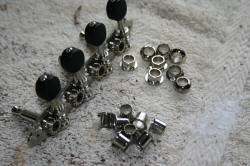
I like these Gotoh machines, but I dislike the large bushings they
supply with them, so I can the stock bushings and use the "vintage"
style ones from StewMac. |
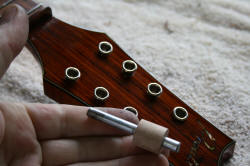
I built this little pressing device; I chuck it into the drill press,
and press the bushings home (without turning on the drill press, of
course!)
|
|
|
|
|
|
|
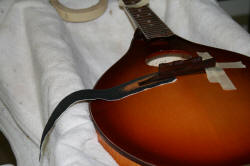
To fit the bridge on a new mandolin, I tape one leg exactly where it
will live the rest of its life, and slide some cloth backed sandpaper
under the free leg. |
|
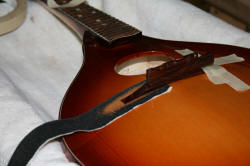 |
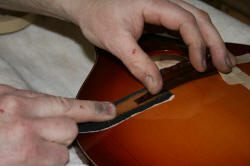
Applying light, yet firm(if that makes sense?) pressure on the bridge,
I'll pull the paper, but never completely out. The bridge's feet were
already a decent fit, and this method finishes off the fit. I'll do both
sides, chck the fit, and refine if necessary. After I'm done, there will
be a few light scratches in this area, but a quick trip to the buffer
takes care of them. This is why I only use this method on new mandolins!
Others get a manual chalk fit. |
|
|
|
| |
|
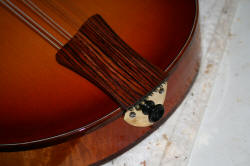
The second half of the tailpiece is made here; it's a nice little cover,
made of matching wood, in this case, cocobolo to match the fretboard and
headstock. The cover is cut such that it holds to the two out strings
via a dovetail, and to the two center strings via a stud and o-ring.
More on this later! |
|
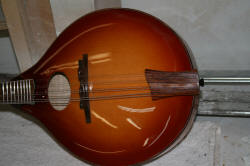
The bridge is also of my own making and design. I'll make a dedicated
page regarding these in the next few days. |

Now, to the next page, for some photos of the completed mandolin! A true
sweetheart! The shorter scale works wonderfully; she's wonderfully light
playing, yet does not lack for volume and tone at all. I notice the
shorter scale most when playing full 4 finger chords, especially the
bluegrass G chord, which always stretches my pinky to the point of
hurting at times; with this one, it's a cinch! I'l be making myself one
of these, for sure! Or maybe I'll yank the fretboard off my personal
A-5, and replace it with this shorter scale one, with a zero fret. Yes,
I like both of these "features" that much. |
|
|
|
|
|
|
|
|
|
|
|
|
|
| |
|
|
|
|
.. |
|
|
|
|
|
|
|
|
|
|
|
|
|
| |
|
|
|
|
|
|
|
|
|
|
|
|
|
|
|
|
|
|
This A-52 model is being donated to the Studdard Family Scholarship Fund,
and it will be drawn on June 26th, 2009 at Steve Kaufman's Acoustic Kamp. If
you would like to purchase a chance(ticket), or to simply donate something
toward the fund, please contact Warren
Knorr or
call JoEllen at Steve's
Flatpik Central Ph 865 982 3808 Mon-Fri 9AM to 2PM EST Each $10(Ten Dollar)
donation buys one chance/ticket!
PREVIOUS PAGE
NEXT
PAGE
|
